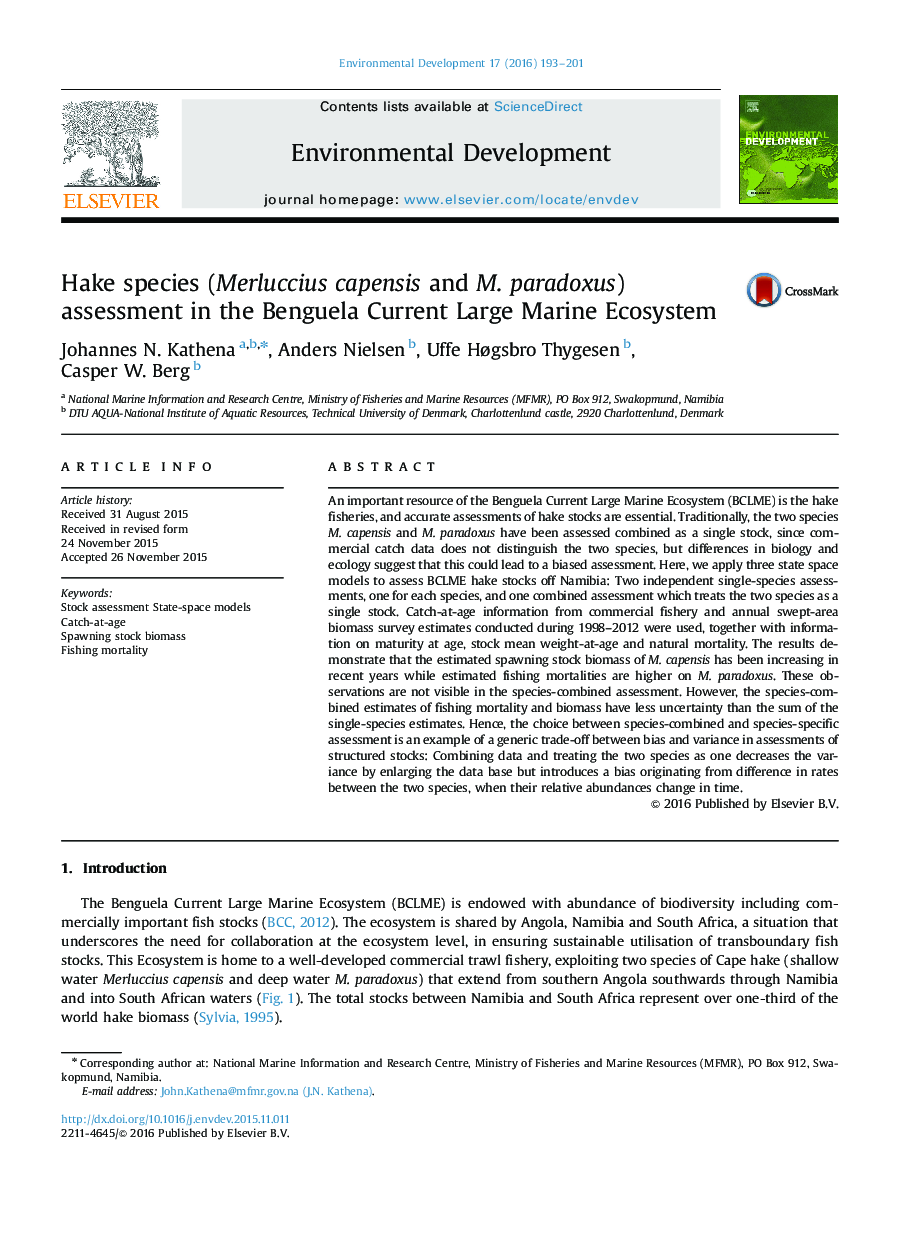| Article ID | Journal | Published Year | Pages | File Type |
|---|---|---|---|---|
| 4391385 | Environmental Development | 2016 | 9 Pages |
•Combined-species assessment does not completely capture the underlying process of the two stocks.•Combined-assessment estimates a higher spawning stock biomass, than the sum of separated species assessment added together.•Separate-species assessment shows an increase in spawning stock biomass of M. capensis, and a decrease in M. paradoxus in the last five years, which is impossible to observe in the combine-species assessment.•Fishing mortality on M. paradoxus has been relatively higher than on M. capensis.
An important resource of the Benguela Current Large Marine Ecosystem (BCLME) is the hake fisheries, and accurate assessments of hake stocks are essential. Traditionally, the two species M. capensis and M. paradoxus have been assessed combined as a single stock, since commercial catch data does not distinguish the two species, but differences in biology and ecology suggest that this could lead to a biased assessment. Here, we apply three state space models to assess BCLME hake stocks off Namibia: Two independent single-species assessments, one for each species, and one combined assessment which treats the two species as a single stock. Catch-at-age information from commercial fishery and annual swept-area biomass survey estimates conducted during 1998–2012 were used, together with information on maturity at age, stock mean weight-at-age and natural mortality. The results demonstrate that the estimated spawning stock biomass of M. capensis has been increasing in recent years while estimated fishing mortalities are higher on M. paradoxus. These observations are not visible in the species-combined assessment. However, the species-combined estimates of fishing mortality and biomass have less uncertainty than the sum of the single-species estimates. Hence, the choice between species-combined and species-specific assessment is an example of a generic trade-off between bias and variance in assessments of structured stocks: Combining data and treating the two species as one decreases the variance by enlarging the data base but introduces a bias originating from difference in rates between the two species, when their relative abundances change in time.
